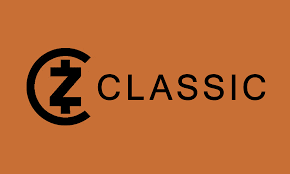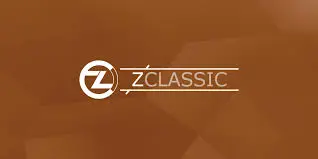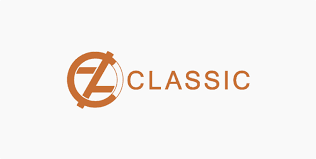ZClassic (ZCL) Crypto: A Privacy-Focused Cryptocurrency
Table of Contents

ZClassic is a Mineable Token that you can mine. If you want to learn more about an alternative coin and mineable token that can be mined, you can check Niftyfinances for more information.
Imagine a cryptocurrency that combines the best of Bitcoin with privacy-focused technology. That’s ZClassic (ZCL)! Designed to empower users with anonymous, fast, and decentralized transactions, ZClassic provides a unique approach to privacy in crypto. Unlike other coins, ZCL eliminates founder rewards, ensuring users benefit fully. Whether you’re a trader, miner, or crypto enthusiast, ZCL offers something for everyone. Dive in to learn how ZCL is shaping the future of privacy in blockchain!

What Is ZClassic (ZCL)?
ZClassic (ZCL) is a privacy-focused cryptocurrency that was created as a fork of Zcash (ZEC) to provide the same strong privacy features while eliminating some of the centralizing elements of Zcash. ZCL was designed to maintain the principles of decentralization, giving users a truly open and permissionless way to transact with privacy and security.
ZClassic offers both transparent and shielded transactions, utilizing the same technology behind Zcash’s privacy features—zk-SNARKs—while offering more control over the network’s future by removing any developer fees or founder’s rewards.
One of the primary differences between ZClassic and Zcash is the absence of the “founder’s fee.” Zcash’s original model included a portion of mined coins being allocated to the project’s developers and founders for the first few years. This fee was seen as a centralizing influence, leading to community dissatisfaction.
ZClassic’s creators aimed to remove this fee to ensure that the mining rewards go entirely to the miners, rather than benefiting a small group of developers. This aligns ZCL more with the values of decentralization, making it a fairer and more community-driven cryptocurrency.
The Role of zk-SNARKS for Transaction Privacy
Like Zcash, ZClassic leverages zk-SNARKs (Zero-Knowledge Succinct Non-Interactive Arguments of Knowledge), a cryptographic technology that allows transactions to be validated without revealing any details about the sender, receiver, or the transaction amount. This ensures that users’ financial activities remain private, offering a high degree of confidentiality in their transactions.
The integration of zk-SNARKs is a key innovation in blockchain privacy, allowing ZCL users to choose between transparent transactions (like Bitcoin) or shielded transactions (private transactions). This flexibility provides users with the ability to balance privacy and transparency based on their needs.
Benefits of Using ZClassic
- No Founder’s Fee: ZCL offers 100% mined rewards to miners, ensuring that the cryptocurrency remains decentralized and community-focused.
- Privacy Features: Thanks to zk-SNARKs, ZCL allows for highly secure and private transactions. Users can protect their financial data from prying eyes while still benefiting from the security of a blockchain.
- Decentralization: By eliminating the founder’s fee and having a more community-oriented development process, ZCL ensures that no single entity controls the network, preserving its decentralized nature.
- Low Transaction Fees: ZClassic’s network is designed for efficiency, providing low-cost transactions, making it a practical choice for users seeking an affordable alternative to traditional financial systems.
- Fork of Zcash: ZCL inherits the robust technology of Zcash, including the proven zk-SNARK privacy model, but without the controversial fees that were initially part of Zcash’s economic structure.

How ZClassic work?
ZClassic operates on a blockchain, which is a decentralized and distributed ledger that records all transactions in a secure and immutable way. Like Bitcoin and Zcash, ZCL uses a Proof-of-Work (PoW) consensus mechanism, where miners validate and secure the network by solving cryptographic puzzles. These miners are rewarded with ZClassic coins (ZCL) for their efforts, helping to maintain the network’s integrity.
The ZClassic blockchain ensures that transactions are permanent and tamper-proof. This is made possible by consensus rules and cryptographic hashing, which make altering any part of the blockchain incredibly difficult. Transactions are stored in blocks, and each block is linked to the one before it, creating a chain that is highly resistant to fraud or manipulation.
Transparent vs. Shielded Transactions
ZClassic provides users with two options for conducting transactions:
- Transparent Transactions: These are similar to Bitcoin transactions, where the sender, receiver, and transaction amount are visible to everyone on the blockchain. While transparent transactions are not private, they are still secure and validated by the network.
- Shielded Transactions: Leveraging zk-SNARKs (Zero-Knowledge Succinct Non-Interactive Arguments of Knowledge), shielded transactions allow users to send funds with complete privacy. The details of the transaction (sender, receiver, and amount) are encrypted, and only the participants in the transaction know the details. This ensures that financial activity is kept confidential, adding an important layer of privacy that traditional cryptocurrencies do not offer.
The ability to choose between transparent and shielded transactions gives users more flexibility and control over how their financial data is handled.
The Importance of Decentralization in ZClassic
ZClassic was created with decentralization at its core. The absence of a founder’s fee (which was present in Zcash) ensures that all coins are distributed equally to miners, rather than a small group of developers benefiting from the network’s growth. This makes ZCL more democratic and resistant to central control, as no single party can influence the project’s development or its economic model.
The decentralized nature of ZClassic also extends to its mining network. ZClassic is ASIC-resistant, meaning it discourages the use of specialized mining hardware, making it more accessible for individual miners to participate with standard computer hardware (GPUs). This further promotes decentralization by ensuring that mining power is distributed across a larger, more diverse group of participants.
Community-Driven Development Model
ZClassic’s development and governance are driven by the community rather than a centralized authority or corporate entity. The ZCL project is open-source, and decisions about its future are made through community input and collaboration. This model encourages transparency, inclusivity, and innovation from a diverse range of contributors, all working together to improve and grow the network.
The community-driven development model ensures that the direction of ZClassic aligns with the values of its users, keeping it free from the influence of any one controlling party. Contributors can propose and vote on improvements, and the project’s roadmap is shaped by the collective vision of the community.

How to Mine ZClassic (ZCL)
Mining ZClassic (ZCL) is the process by which new coins are created and transactions are validated on the blockchain. ZClassic uses a Proof-of-Work (PoW) consensus mechanism, similar to Bitcoin, where miners solve cryptographic puzzles to add blocks to the blockchain. In return for their efforts, miners receive ZCL as a reward.
ZClassic is designed to be ASIC-resistant, meaning it can be mined using GPUs (Graphics Processing Units) instead of expensive, specialized ASIC mining hardware. This makes ZCL mining more accessible to individuals and small-scale miners, ensuring that mining remains decentralized.
Equipment Needed for ZClassic Mining
You’ll need the following equipment to mine ZCL.
- Mining Hardware (GPU):
ZClassic mining requires a GPU (Graphics Processing Unit), as it is ASIC-resistant. Popular GPU brands include NVIDIA and AMD. High-performance GPUs will increase your chances of successfully mining ZClassic. While multiple GPUs can be used to maximize mining power, a single GPU setup can also be sufficient for starting. - Mining Software:
ZClassic can be mined using specialized mining software that connects to the blockchain and the chosen mining pool. Some of the most commonly used mining software for ZClassic include:- EWBF’s Cuda Miner (for NVIDIA GPUs)Claymore Miner (for AMD and NVIDIA GPUs)ZCash Miner (also supports ZClassic)
- Wallet:
Before you begin mining, you’ll need a ZClassic wallet to store your mined coins. There are several options available, including desktop wallets (e.g., ZClassic Core Wallet) and third-party wallets that support ZCL. Be sure to choose a secure wallet to ensure your coins are safely stored.
Step-by-Step Mining Process
Here’s a step-by-step guide to mining ZClassic:
- Choose a Mining Pool:
Since solo mining can be difficult due to the competition, mining pools allow you to combine resources with other miners to increase the chances of successfully mining a block. Popular mining pools for ZCL include:- ZClassicPoolCoinmine.plFlypool
- Download Mining Software:
Once you’ve selected a mining pool, download the appropriate mining software. Be sure to download software from trusted sources to avoid malware or scams. - Configure Your Mining Software:
After downloading the mining software, you’ll need to configure it to connect to the chosen mining pool. This typically involves:- Entering the pool’s server address.
- Adding your ZClassic wallet address so that your earnings are sent to your wallet.
- Adjusting other settings like GPU intensity to optimize performance.
- Start Mining:
After configuring the software, start the mining process. Your mining software will begin connecting to the pool, solving cryptographic puzzles, and submitting shares. Monitor your miner’s performance to ensure everything is running smoothly. - Monitor Your Earnings:
Once your miner is up and running, you can monitor your mining stats (such as hash rate and earnings) via the mining pool’s dashboard. You’ll typically receive payouts at regular intervals based on the pool’s payout system.
Profitability and Tips for Efficient ZCL Mining
Mining ZCL can be profitable, but the profitability depends on several factors:
- Hashrate:
The more powerful your GPU, the higher your hashrate (the number of computations your machine can perform per second). Higher hashrates increase your chances of solving blocks and earning rewards. Investing in high-performance GPUs can significantly improve your mining profitability. - Electricity Costs:
Mining consumes a lot of electricity, so it’s essential to calculate your energy costs. Be sure to mine in an area with low electricity rates to maximize profits. Keep in mind that electricity costs will often be your biggest expense while mining. - Mining Pool Fees:
Different mining pools charge different fees, typically between 1% and 3% of your earnings. Choose a pool with a reasonable fee structure, ensuring that the pool’s rewards system aligns with your goals. - Optimize Your GPU Settings:
Tuning your GPU’s settings can enhance its mining performance. Consider adjusting factors such as core clock, memory clock, and power limit to find the optimal balance between mining efficiency and power consumption. There are also overclocking tools that help optimize GPU settings for better performance. - Join Efficient Pools:
Opt for mining pools with a large user base and stable payouts. Pools with higher hashrates generally have more frequent block discoveries, leading to more consistent payouts. Make sure to research different pools to find the best one for your mining needs. - Stay Updated on Network Changes:
As with any cryptocurrency, the mining difficulty of ZClassic can fluctuate based on network conditions. Stay updated on ZCL network changes and adjust your mining strategy accordingly to maintain profitability.
How to Secure Your ZClassic Wallets
Types of Wallets Compatible with ZClassic
To store your ZClassic (ZCL) securely, you’ll need a cryptocurrency wallet. There are several types of wallets compatible with ZCL, each offering different features depending on your preferences and needs.
- Hardware Wallets:
These are physical devices that store your private keys offline, providing an extra layer of security. Hardware wallets are considered one of the safest options for storing cryptocurrencies, as they are less vulnerable to hacking attempts. - Desktop Wallets:
Desktop wallets are software applications installed on your computer. They allow you to manage your ZClassic securely, but since they are connected to the internet, they are more vulnerable to malware and attacks if your computer is compromised. - Mobile Wallets:
Mobile wallets are apps that you can install on your smartphone. They offer the convenience of accessing and managing your ZClassic on the go. While convenient, mobile wallets may not be as secure as hardware wallets, and you should ensure your phone is protected from unauthorized access. - Web Wallets:
Web wallets are browser-based wallets that store your ZClassic online. These wallets are usually accessible from any device, but since your private keys are stored on the internet, they are more susceptible to security risks like phishing attacks.
Best Practices for Securing Your Cryptocurrency
While using the right wallet is crucial, securing your cryptocurrency also involves adopting good practices. Here are some essential tips to protect your ZClassic:
- Use Strong, Unique Passwords:
Always set strong, unique passwords for your wallets and any accounts related to your cryptocurrency. A strong password includes a mix of uppercase and lowercase letters, numbers, and special characters. Avoid using easily guessable information. - Enable Two-Factor Authentication (2FA):
For wallets that support it, enable two-factor authentication (2FA). This adds an extra layer of security by requiring a second form of verification (such as a text message or authenticator app) before accessing your wallet. - Backup Your Wallet:
Always create backups of your wallet’s private keys or seed phrases. This is crucial in case your wallet is lost, stolen, or damaged. Store backups in multiple, secure locations (such as offline, encrypted USB drives) and never share them with anyone. - Use a Cold Wallet for Long-Term Storage:
If you plan on holding ZClassic for a long period, consider storing it in a cold wallet (hardware wallet) that is not connected to the internet. This minimizes the risk of your funds being hacked or stolen. - Avoid Phishing Scams:
Be cautious about phishing attempts. Never click on suspicious links or disclose private keys, passwords, or personal information to unverified sources. Always double-check website URLs and ensure you are on legitimate sites. - Keep Your Devices Secure:
Ensure that your computer, smartphone, or any device used to access your wallet is secured with anti-virus software, a firewall, and encryption. Avoid using public or unsecured Wi-Fi networks when accessing your wallet.
Recommended ZClassic Wallets (Hardware, Desktop, and Mobile Options)
- Hardware Wallets:
- Ledger Nano S / Ledger Nano X:
The Ledger Nano S and Nano X are widely regarded as two of the best hardware wallets in the industry. Both support ZClassic and provide top-notch security by storing private keys offline. - Trezor Model T:
Trezor is another reputable hardware wallet that supports ZClassic. It offers robust security features, including a touch screen for easier transaction management.
- Ledger Nano S / Ledger Nano X:
- Desktop Wallets:
- ZClassic Core Wallet:
The official ZClassic wallet, ZClassic Core, is a full-node desktop wallet that allows you to store your ZCL securely. It offers advanced features, including the ability to run your node, but it can require more system resources and storage. - Exodus Wallet:
Exodus is a user-friendly desktop wallet that supports ZClassic. It has a sleek interface and features an integrated exchange, allowing you to swap between various cryptocurrencies directly within the wallet. However, it is not open-source, so you should evaluate the trustworthiness of the software.
- ZClassic Core Wallet:
- Mobile Wallets:
- Coinomi Wallet:
Coinomi is a popular multi-currency mobile wallet that supports ZClassic. It offers strong encryption and a simple interface, making it easy to manage your ZClassic on your smartphone. - Trust Wallet:
Trust Wallet is another secure mobile wallet that supports a wide range of cryptocurrencies, including ZClassic. It offers private key storage, and enhanced security features, and is available for both Android and iOS devices.
- Coinomi Wallet:
- Web Wallets:
- ZClassic Wallet Online:
This is an online wallet service that allows you to store ZClassic securely through your browser. While convenient, web wallets are more prone to hacking and phishing attempts, so it’s recommended to only use them for smaller amounts of ZClassic or temporary storage.
- ZClassic Wallet Online:
Securing your ZClassic (ZCL) is vital to protect your assets from potential threats. Whether you choose a hardware, desktop, or mobile wallet, following best security practices like using strong passwords, enabling 2FA, and regularly backing up your wallet will help safeguard your cryptocurrency. For long-term storage, a cold wallet such as a hardware wallet is always the best option for maximum security.
ZClassic (ZCL) isn’t just another cryptocurrency, it’s a movement toward privacy, transparency, and fairness in the blockchain world. With zero founder rewards and strong community support, ZCL ensures users are at the forefront of every transaction. Ready to join the privacy revolution? Explore ZClassic today!